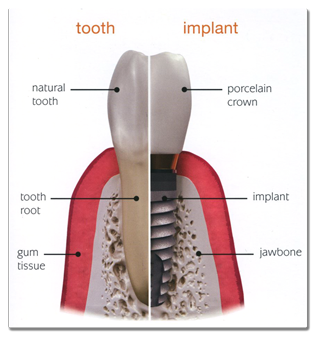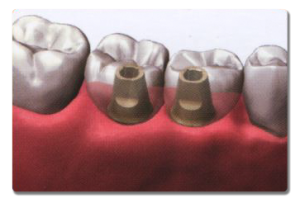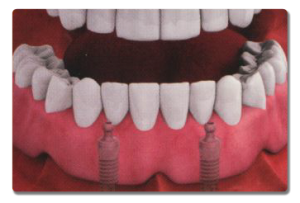Are you favouring eating on one side of your mouth more than the other after you lost your tooth or teeth?
Should I have Dental Implants? Ask yourself these simple questions:
Are you having the trouble with recurrent sore spots from your loose denture?
Are you worrying that your denture might be flying of your mouth in front of the public when you sneeze or cough?
Are you feeling embarrassed or lack of confidence to smile because of your missing tooth or teeth?
Are you having difficulty in your speech due to the presence of your denture or the absence of your teeth?
Did you lose your tooth or teeth due to gum disease, decay or perhaps an accident ?
Was your tooth missing from birth?
If your answer is Yes to any of the above questions
Dental Implants maybe your answer.
WHAT ARE DENTAL IMPLANTS
Dental implants have been around over 50 years and now become a new standard of care. Dental Implants in Canberra have certainly picked up this trend in recent years. Dental implants are the closest imitation of mother natures’ work in creating a tooth.The missing roots are replaced by a titanium screw positioned in the jawbone. In the past, it would take 6 to 12 months for the implants to be integrated into the jawbone (osseointegration). Significant improvement in various types of the implant surface has helped to reduce the integration time to 10-12 weeks.
Laser-Lok technology by Biohorizons has made the integration not only happening at the bone-implant level but also gum-implant level. The implant will look more natural in the mouth and maintenance for the implants becomes effortless.
The dental implants provide support for the crown(s) on top and replace a missing tooth or teeth. For patients who wear dentures, the implants serve as anchors for the dentures. Metal housings will be fitted at the base of the dentures. They will click over the implant heads to provide stability for your denture.
WHAT WILL HAPPEN WHEN I CHOOSE NOT TO REPLACE MY MISSING TOOTH?
When lack of stimulation from the roots, the jawbone shrinks just like muscle wasting when one is sick and bed-ridden for some time. The teeth adjacent and opposing to the missing tooth will move and tilt towards the gap. Spaces between your teeth are widened and favour food trap, decay and gum disease. The opposing tooth or teeth look longer due to super-eruption. Your bite plane could change. All these events slowly happen and they can change your appearance and make you look older.
AM I A CANDIDATE FOR DENTAL IMPLANTS?
Most adults and some adolescents whose facial structures have matured can have dental implants. Patients who are proned to infections such as patients with poorly-controlled diabetes, immuno-compromised conditions so as smokers, can have much higher risk of implant failure. These issues will be discussed at the consultation visit.
WHAT DOES THE IMPLANT PROCESS INVOLVE?
The dentist will go through the details of your general health including the medications you are taking and assess the status of your dental health. Xrays, impressions of your teeth and the bone scan of the implant site will be included in the assessment.
If the volume and the quality of the bone receiving the implant is not adequate for optimal implant placement, a bone graft maybe necessary. It could take three to six months for the site to mature before the implant can be inserted. Specialist dentist could be involved in this step.
The procedure will be carried out under local anaesthetics. If you feel nervous about the appointment, it maybe helpful for you to have some form of oral sedation medication, prescribed by your doctor. You will need someone to drive you to the appointment and take you home afterwards. It is essential that you follow our instructions on taking antibiotics and pain relief. Generally, you should be comfortable enough to return to work the next day.
You will have a form of temporary restoration while you wait for the implant to integrate. The method of temporary replacement of your missing tooth or teeth will be discussed with you at the consultation visit. The healing process mostly takes three months.


